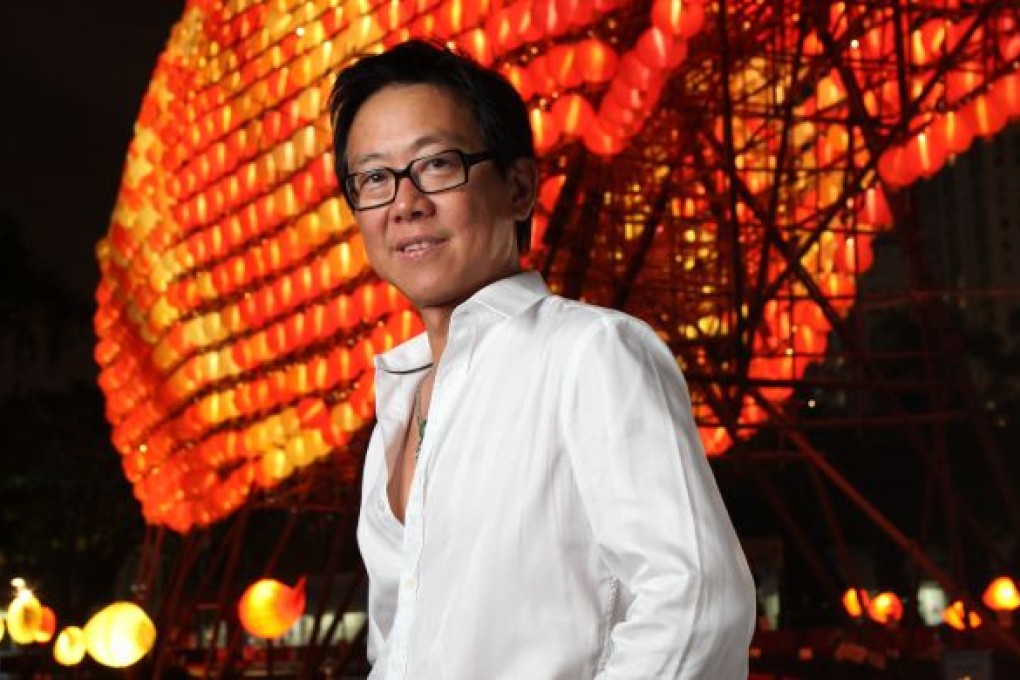William Lim
Developed by William Lim and Stanley Wong (anothermountainman), “Journey to Tomorrow” is a series of portraits in which people pose with an object that represents their vision of Hong Kong in 20 years. Lim tells KK Rebecca Lai about the project and his thoughts on architecture.

HK Magazine: What is your design philosophy?
William Lim: Architects have a kind of social obligation to improve urban environments. Architecture is about people. I always feel that architects are only doing maybe half of the job—the other half is really [done by] the occupant using the space. Whatever we do, the design has to be really appropriate for the function of the space. So for each problem, there’s a special way of solving it.
HK: Can you give us an example?
WL: I’ll use Lab Concept, which is the space where were doing the exhibition. In a way, we are quite proud of the result. It’s a very complicated project because [the area] has to serve many different functions: it is a pedestrian thoroughfare, as it links a few commercial buildings in the Queensway area; it also links to various footbridges and the MTR station and the bus station underneath it; and then it is a retail space. It has very high traffic, which is actually not good because people won’t have time to stop and browse. More importantly, it has to create a nice environment for people.
HK: What is special about architecture in Hong Kong?
WL: It took me a long time to really start to understand what Hong Kong’s architecture is about. In a lot of cities, we look at architecture as an iconic gesture. But for Hong Kong it’s more about buildings coexisting together; it’s about trying to do the best with each site. No site in Hong Kong is perfect. Hong Kong is full of contradictions and [is a very] congested environment. You need to look at the situation from a micro-scale, and you try to build the most sensitive building amongst the constraints. That’s why, when you look at Hong Kong, the skyline is beautiful; the buildings as a group are beautiful. They work as a whole. The old coexists with the new—the wet market coexists with the high-rise building. I think that’s what Hong Kong should pride itself on—not being the most beautiful, [but being] about coexistence.
HK: Tell us about the concept behind “Journey to Tomorrow.”
WL: Originally, I was only going to do a book launch. The name of my book was “Journey,” and Stanley came up with the idea of “Journey to Tomorrow.” Hong Kong is transitioning into a cultural and artistic destination, but nobody knows how this will turn out. Next year will be the first official Art Basel in Hong Kong—plus the growth of M+, the development of West Kowloon, and there’s also talk about having a cultural ministry in Hong Kong. We thought that if we could document the people at this time that are involved in this, it would be a great project to do. So we invited people to pose for us in spaces that CL3 [Lim’s architecture firm] has designed. Hopefully, by the end of next year, we’ll come up with a kind of time capsule of the people, the places and the thinking behind this period in Hong Kong.
HK: What is the significance of the object—the paint box—that you decided to hold for your portrait?
WL: Art has always been an important part of my life. I have always felt that I’m living two lives—one is with architecture and one is with art. The two need to come together. [I envision that, in the future, people will] look at architecture more from an artist’s point of view. They will be sensitive to the little things—the proportion, the lighting, the environment. Artists have done that very successfully. If I can use that same principle and deal with architecture, it will be great.
HK: Where do you see Hong Kong in terms of architecture and style in 20 years?
WL: I think it’s suffering compared with other Southeast Asian cities, or even compared to cities in China. They could build a lot more innovative projects there. This is a given: architects have to be a lot more creative here, and hopefully we can really push the limit. With Hong Kong focusing more on art and culture, I hope that someday people will start to realize that architecture is about space. It’s not about three meters’ ceiling height. It’s about letting people experience different spaces.